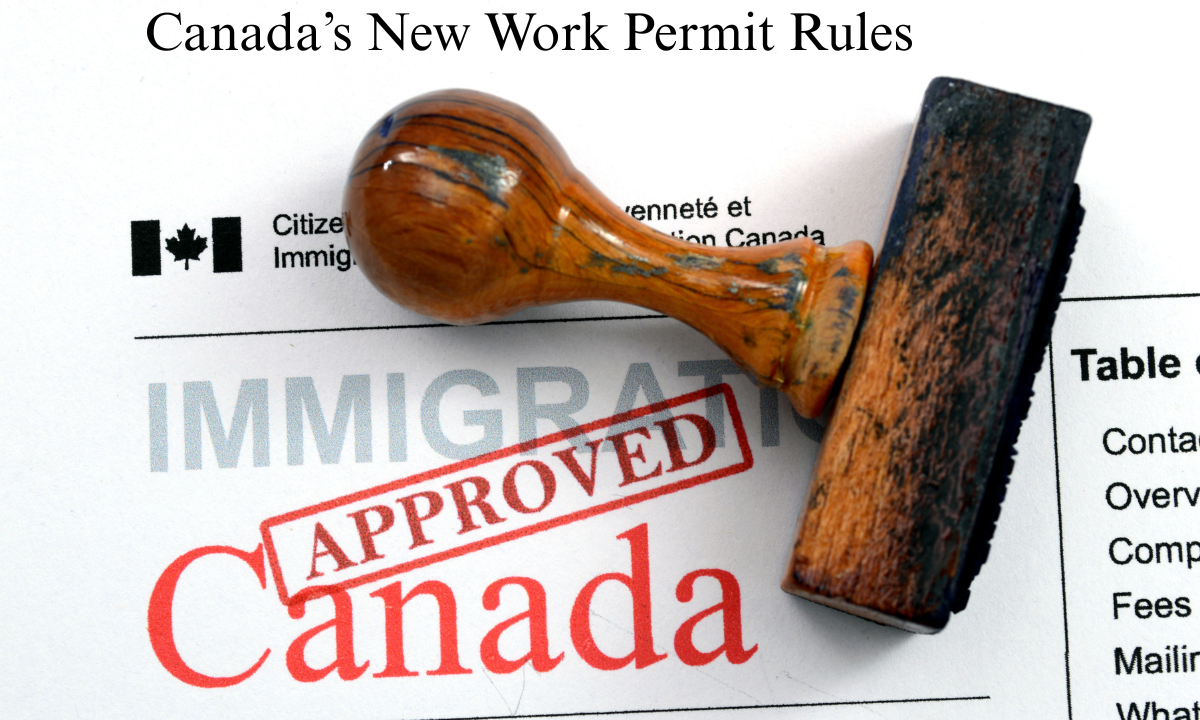Canada’s New Work Permit Rules : A Game Changer for Foreign Workers
Canada’s New Work Permit Rules : Looking to change jobs in Canada as a foreign worker? Good news—new regulations make it easier and faster than ever.
In a significant move aimed at supporting foreign talent and easing labor shortages, the Canadian government has introduced a temporary public policy that allows foreign workers to change jobs or employers without waiting for a new work permit to be fully approved. This change provides much-needed relief to thousands of temporary foreign workers already contributing to Canada’s economy.
Let’s break down what this new policy means, how it works, and who can benefit.
🧭 What’s New in the Work Permit Policy?
Previously, foreign workers who wished to switch jobs had to wait for their new work permit application to be approved before starting with a different employer. This often led to:
- Weeks of unpaid downtime
- Delays in job transitions
- Frustration for both workers and employers
Now, under the new interim policy, eligible foreign workers in Canada can start working in a new job while their work permit application is still being processed.
✅ Who Can Benefit from This Policy?
This policy is designed to benefit several groups of foreign workers, including:
1. Workers on Maintained Status
These are individuals whose work permits have expired, but who are legally allowed to stay and work in Canada while their renewal application is in process. Before, such workers were restricted to their previous job and employer—even if that role no longer existed. With the new policy, they can now switch jobs or employers while waiting for their new permit.
2. Workers with Job-Specific Permits
Foreign nationals whose existing work permits tie them to a specific employer or job title can now transition more easily if:
- They are laid off
- They seek better career growth
- They find improved pay or benefits
- Their current job environment becomes incompatible
3. Permit-Exempt Workers Who Now Need a Permit
Some foreign workers who didn’t need a work permit for their initial role may require one for their new job. Under the new policy, they can begin the new role immediately while the permit application is pending.
📄 Key Requirement: You Must Apply for a New Work Permit
To take advantage of this rule, you must have submitted a new work permit application—either for a job under the Temporary Foreign Worker Program (TFWP) or the International Mobility Program (IMP).
Once the application is submitted, you don’t have to wait for approval. You’re eligible to start working in your new position immediately under the new guidelines.
🤝 Why This Matters
Canada heavily relies on temporary foreign workers to fill key labor and skills gaps across many sectors—healthcare, agriculture, construction, tech, and more.
But until now, the system made it difficult for foreign workers to:
- Transition to better roles
- Stay employed after layoffs
- Switch employers in emergency situations
This new policy acknowledges that real-life employment situations can change unexpectedly, and it gives foreign workers the flexibility they need to remain active in the workforce without unnecessary delays.
🧠 Real-World Example: Maria’s Story
Maria, a caregiver from the Philippines, was working in Ontario under a valid work permit tied to a specific employer. When her employer relocated unexpectedly, she was left jobless—but still in Canada on maintained status while her permit renewal was being processed.
Under the old system, Maria would’ve had to wait weeks or months before starting a new caregiving job. But thanks to the new policy, she could immediately begin working with her new employer as soon as the application was submitted.
🌐 What Employers Should Know
Employers looking to hire foreign workers already in Canada stand to benefit as well. Now, rather than waiting for permit approval, they can onboard qualified candidates faster, cutting down on recruitment gaps and maintaining workflow efficiency.
Key tip for employers: Always ensure the worker has submitted a new work permit application and that it aligns with either the TFWP or IMP program requirements.
📌 A Quick Summary of the New Rules
| Aspect | Previous Rule | New Rule (2025) |
|---|---|---|
| Job switch wait time | Wait until new work permit is approved | Can start working after application is filed |
| Maintained status limitations | Cannot switch job/employer | Now allowed to change roles or employers |
| Permit-exempt to permit-required | Wait for new permit | Can start new job immediately |
| Benefit to employers | Delayed hiring process | Faster onboarding, less disruption |
💡 Expert Tips for Foreign Workers
- Document everything: Keep proof of your submitted application (acknowledgment letter, receipts).
- Communicate with your employer: Let them know you are legally allowed to start while your permit is pending.
- Stay updated: This is a temporary public policy—it may change. Monitor IRCC updates regularly.
✍️ Final Takeaway
Canada’s updated work permit rules mark a progressive shift in immigration and labor policy. By allowing foreign workers to transition jobs more easily, the government is showing its commitment to both workforce flexibility and immigrant welfare.
If you’re a temporary foreign worker in Canada, this could be your chance to advance your career, secure better opportunities, and avoid employment gaps—without the bureaucratic hold-up.
FAQ
Q: Can I change employers before my work permit expires?
A: Yes, as long as you’ve submitted a new application for a work permit related to your new job.
Q: What if I’m laid off suddenly—can I immediately start a new job?
A: Under this policy, yes—if you apply for a new permit, you can start the new job while it’s being processed.
Q: Is this a permanent change?
A: No, this is currently a temporary public policy. Stay tuned for updates from Immigration, Refugees and Citizenship Canada (IRCC).
